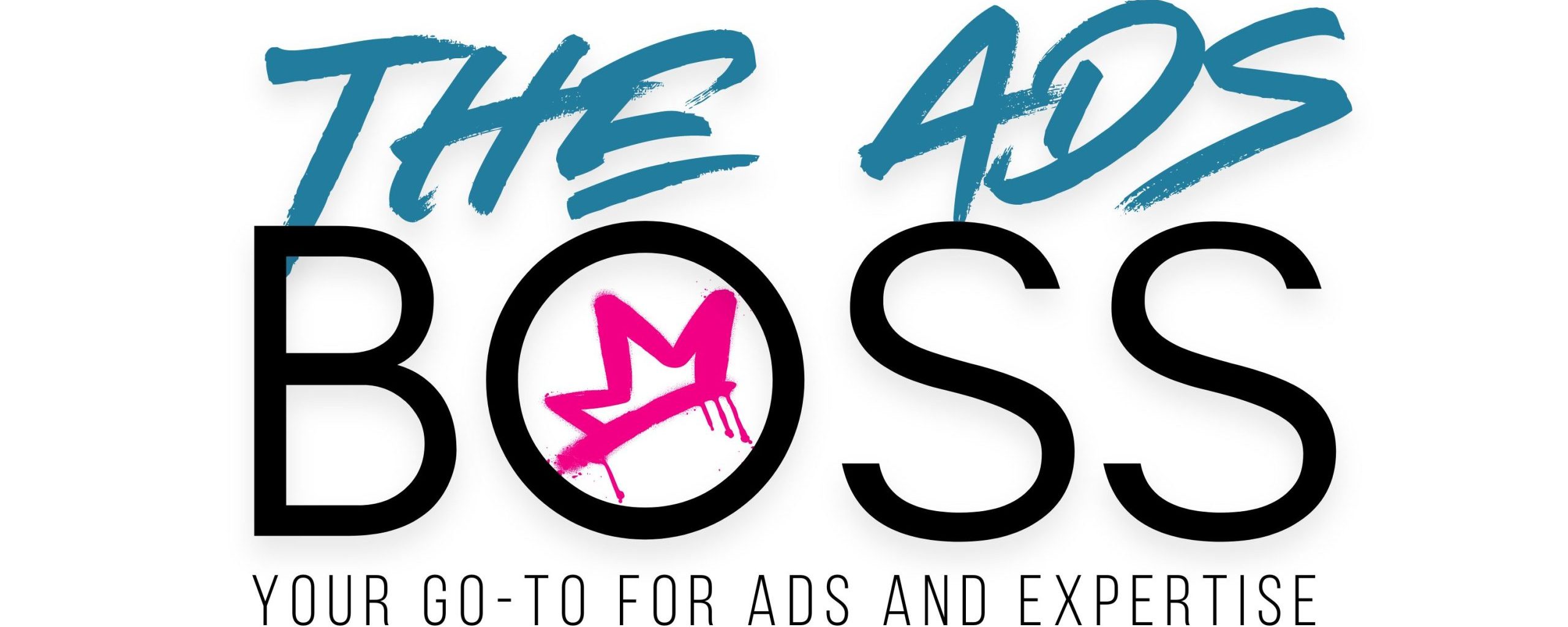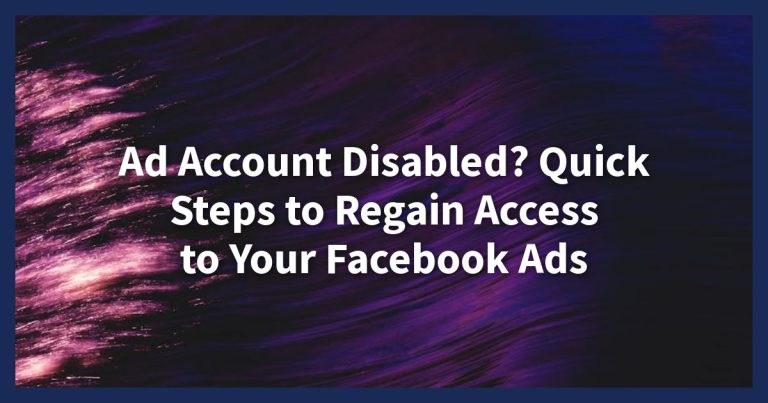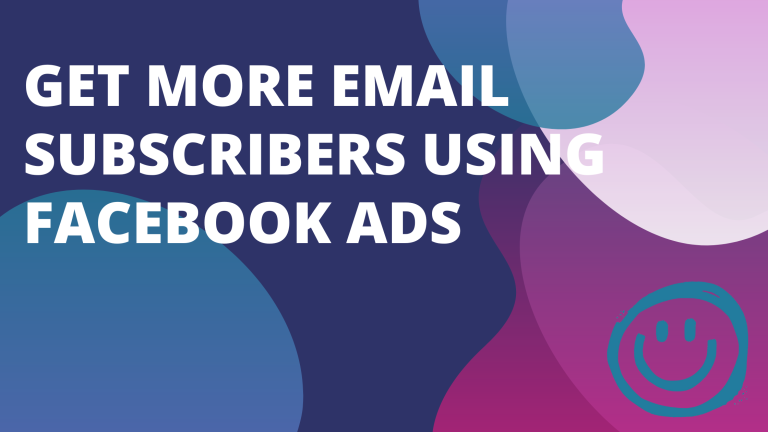Growing Your Podcast Audience with Facebook Ads

Grow Your Podcast Audience with Facebook Ads: A Step-by-Step Guide
Podcasting has taken off as a popular way to connect and share ideas. But growing your audience can feel like a tough challenge. That’s where Facebook ads come in. These ads can help you reach new listeners who are eager for your content.
In this guide, you’ll discover how to set up effective Facebook ads that attract the right crowd. We’ll walk through targeting your ideal audience, crafting compelling ads, and tracking your results. Whether you’re just starting or looking to boost your existing podcast, this step-by-step approach will put you on the fast track to growth. Ready to dive in?
Understanding Your Target Audience
Knowing your target audience is crucial for effectively growing your podcast. When you understand who your listeners are, you can tailor your content and marketing strategies to meet their needs. Here are two key areas to focus on in identifying and understanding your ideal listeners.
Creating Listener Personas
Creating listener personas helps you visualize who you want to reach. This process involves gathering data to build detailed profiles that represent your audience segments. Start by asking questions like:
- What age range do your listeners fall into?
- What are their interests, hobbies, and professions?
- Where do they spend their time online?
Once you answer these questions, create the persona profiles. Each profile should include:
- Name: Give your persona a name to make it relatable.
- Demographics: Note key details like age, gender, location, and education level.
- Interests: Think about hobbies, favorite podcasts, and where they might engage with content.
- Challenges: Identify any pain points or issues they face that your podcast can help solve.
- Goals: What are the aspirations or goals they want to achieve?
By having these personas, you’ll better tailor your podcast content to keep them engaged. Imagine having a conversation with your listeners; these personas make it easier to think from their perspective.

Conducting Market Research
Market research is your tool for knowing what makes your audience tick. Here are several methods to consider when trying to understand your listeners better:
- Surveys: Create online surveys to gather information directly from your audience. Ask about their preferences and which topics resonate with them. Consider using platforms like Google Forms or SurveyMonkey.
- Social Media Listening: Take note of comments and discussions on your social media. What questions are your followers asking? What topics get the most engagement?
- Competitor Analysis: Analyze other podcasts in your niche. What kind of content are they producing? Who are their listeners? This can help you identify gaps in the market that your podcast can fill.
- Analytics Tools: Use podcast analytics tools to examine listener demographics, behaviors, and where they drop off in episodes. This data reveals what’s working and what needs improvement.
Understanding your audience isn’t a one-time task. It requires ongoing effort and adjustments as trends and preferences change. By actively researching and refining your listener personas, you’ll create more targeted content that attracts and retains the right audience.

Photo by Pavel Danilyuk
Setting Up Your Facebook Ads Account
Setting up your Facebook Ads account is straightforward, and it’s essential for promoting your podcast effectively. This step will ensure you have the right tools in place to reach your target audience and track your advertising success.
Navigating Facebook Business Manager
Facebook Business Manager is the hub for managing your ads. It’s a powerful tool that lets you keep your personal profile separate from your business activities. This separation helps maintain professionalism.
Here are the key features of Facebook Business Manager relevant to podcast advertising:
- Ad Accounts: Create and organize multiple ad accounts for various campaigns. You can manage ads for different podcasts or promotional efforts all in one place.
- Audience Insights: Use this tool to understand your audience’s demographics, behaviors, and interests. These insights inform your ad targeting, leading to more effective campaigns.
- Creative Hub: Design and preview your ads before they go live. This feature helps you visualize how your ads will appear across different placements.
- Pixel Integration: The Facebook Pixel tracks actions on your website. By installing this code, you can gather data on user interactions, enabling you to retarget and optimize your ads.
- Reporting Tools: Measure the performance of your ads with detailed reports. Analyzing metrics like reach, engagement, and conversions can help you refine your strategy.
To get started, create a Business Manager account by visiting the Facebook Business website. Follow the prompts to enter your details and set up your first ad account.
Connecting Your Podcast to Facebook Page
Linking your podcast to a dedicated Facebook Page enhances ad management and audience engagement. Here’s how to connect your podcast:
- Create a Facebook Page: If you don’t have one, click on ‘Create’ in the top right corner of your Facebook homepage. Choose ‘Page’ and follow the setup steps, including adding your podcast name, category, and description.
- Add Podcast Details: Fill out the ‘About’ section with information about your podcast. Include any relevant links, such as your website, streaming platforms, and contact information.
- Link Your Ad Account: In Business Manager, go to ‘Business Settings’, select ‘Ad Accounts’, and click ‘Add’. Choose ‘Link Existing Ad Account’ and input the account number associated with your Facebook Page.
- Create Engaging Content: Share episodes, behind-the-scenes content, and graphics to build your community. Encourage followers to interact through comments and shares.
- Schedule Posts: Use Facebook’s scheduling feature to plan your content ahead. Regular posts help maintain audience interest.
By establishing a Facebook Page and connecting it to your podcast, you create a central hub for your audience. This connection simplifies ad management, making it easier to reach potential listeners.

Photo by Nothing Ahead
Crafting Compelling Ad Content
Creating captivating ad content is essential for attracting listeners to your podcast. The right visuals and persuasive copy can significantly increase your chances of reaching your target audience. Dive into the specifics of effective content that will draw attention and resonate with potential listeners.

Creating Eye-Catching Graphics
Visuals play a crucial role in making your ads stand out. Here are some tips to design graphics that connect with your podcast’s brand and grab attention:
- Reflect Your Brand: Ensure your graphics align with your podcast’s theme. Use colors, fonts, and images that embody your podcast’s personality. This cohesion helps create brand recognition.
- Use High-Quality Images: Always opt for sharp, professional images. Blurry or overly complicated visuals can deter potential listeners. Pexels offers a great selection for stock images.
- Keep It Simple: Stick to a clean design. Too many elements can overwhelm viewers. Focus on one central image or concept that represents your episode.
- Include Clear Text: If your graphic contains text, make it easy to read at a glance. Use bold fonts and contrast colors appropriately. The message should be legible, even on smaller screens.
- Incorporate Call-to-Actions: Encourage viewers to take action. Phrases like “Listen Now” or “Join Us” help guide the audience toward the next step.
By following these tips, you’ll create visuals that not only capture attention but also convey the essence of your podcast.

Photo by Mikael Blomkvist
Writing Persuasive Copy
Once your graphics are set, it’s time to focus on the words that will draw listeners in. Here are some strategies for writing ad copy that resonates with your audience:
- Know Your Audience: Use the personas you’ve created to guide your writing. Tailor your language and themes to what they care about and what challenges they face.
- Start with a Hook: Capture attention in the first few words. Ask a provocative question, share a surprising fact, or present a relatable scenario.
- Highlight Benefits: Show potential listeners what they’ll gain from your podcast. Focus on how your content adds value or solves a problem. Use phrases like “Discover how to…” or “Learn tips that will…”.
- Make It Conversational: Write as if you’re speaking directly to someone. Use personal pronouns like “you” and “your” to create a connection. This approach makes your message feel more relatable.
- Use Strong Verbs: Opt for action-oriented language. Instead of saying “You can learn,” say “You will master.” Strong verbs energize your writing and encourage action.
- Don’t Overdo It: Keep your copy concise. Aim for clarity and maintain a friendly tone without overwhelming your audience with jargon or lengthy sentences.
Engaging ad copy is about making a genuine connection. When you speak directly to your audience, you’re more likely to entice them to listen.
Choosing the Right Ad Format
Selecting the appropriate ad format for your podcast can significantly impact its visibility and audience engagement. With various options available on Facebook, it’s essential to understand their unique strengths and how they can serve your promotional goals.
Image Ads vs. Video Ads
When promoting your podcast, you may wonder whether to use image ads or video ads. Both have distinct advantages, and choosing the right one depends on your content strategy and audience preferences.
- Image Ads:
- These ads are straightforward and effective for quick promotions. They enable you to showcase your podcast cover art or an episode highlight in a visually appealing way.
- Image ads can quickly capture attention as users scroll through their feeds.
- They are ideal for conveying a clear message, such as promoting new episode releases or special guests.
- Video Ads:
- Video ads offer dynamic storytelling. They allow you to share snippets from your podcast, highlight engaging discussions, or include behind-the-scenes glimpses.
- Videos can enhance emotional connections and illustrate the podcast’s personality, making it relatable to potential listeners.
- Keep in mind that video ads often require more production resources. They can be effective for engaging users who prefer audiovisual content.
Ultimately, if your goal is to create instant brand recognition and inform listeners, image ads may be your best bet. However, for deeper engagement and storytelling, consider video ads. Don’t forget to test both formats to see which resonates best with your audience.
Carousel Ads for Multiple Episodes
Carousel ads provide an excellent opportunity to showcase multiple episodes of your podcast. With this format, you can create a visually engaging experience that captures the interest of potential listeners.
- Highlight Individual Episodes: Each card in a carousel can feature a different episode. Use captivating images and concise descriptions to highlight what listeners can expect, such as special guests or intriguing topics.
- Emphasize Themes or Series: If your podcast follows a specific theme over several episodes, carousel ads can effectively convey this. Group related episodes together to create a cohesive narrative that draws in listeners looking for in-depth conversations on particular subjects.
- Engage with Call-to-Action Buttons: Each card can include a call-to-action button, prompting users to “Listen Now” or “Learn More.” This feature encourages immediate action and helps convert casual scrollers into dedicated listeners.
Carousel ads create a more interactive experience, allowing potential listeners to swipe through various offerings. This format not only showcases the breadth of your content but also piques interest by presenting options.

Photo by Magnus Mueller
Targeting Your Ads Effectively
Effective ad targeting is essential to reaching potential listeners for your podcast. By utilizing Facebook’s various targeting features, you can connect with an audience that is not only interested in your content but likely to engage with it.
Custom Audiences and Lookalike Audiences
Creating custom audiences allows you to tap into your existing listener base. Start by uploading your email list or using website visitor data through the Facebook Pixel. This targeted approach will help you reach people already familiar with your podcast’s brand.
Once you have your custom audience set up, consider creating lookalike audiences. This tool helps you find new listeners who share similar interests and demographics with your current audience. Here’s how to go about it:
- Access Audiences: In your Facebook Business Manager, navigate to the “Audiences” section.
- Create a Custom Audience: Choose the source (like website traffic or your email list) and follow the prompts.
- Create a Lookalike Audience: After generating your custom audience, select it, click “Create Lookalike,” and specify the target country. Facebook will then identify users who match the profile of your custom audience.
Utilizing both custom and lookalike audiences can significantly enhance your ad’s performance. Imagine reaching out not just to your loyal listeners but also to new individuals who are likely to become fans of your content.
Geographic and Demographic Targeting
Geographic and demographic targeting sharpens your ads’ focus. Understanding where your audience resides and their key characteristics can make a world of difference in your ad campaigns.
- Geographic Targeting: This feature allows you to target users based on their location. Are there specific cities or regions where your podcast has a strong following? Focus your ads on these areas. You can select locales down to the zip code level. For example, if your podcast connects well with urban audiences, concentrate on major metropolitan areas.
- Demographic Targeting: Facebook enables you to target audiences based on age, gender, education level, and more. Understanding who engages with your podcast helps refine your ad messages. If your audience consists of young professionals, tailor your tone and content to resonate with their interests.
Combining geographic and demographic targeting opens up new avenues for reaching the right listeners. By narrowing your focus, you avoid wasted ad spend and ensure your content reaches those who are most likely to engage. Think of it as casting a fishing line in a specific spot rather than throwing a net in the ocean; you’re more likely to reel in something of substance.

Photo by Pixabay
Budgeting and Bidding Strategies
Managing your budget is a key part of running effective Facebook ads for your podcast. Understanding how to allocate your resources can ensure that you get the most out of your ad campaigns. Here, we’ll break down important concepts like Cost Per Click (CPC) and Cost Per Thousand Impressions (CPM), as well as different budgeting options.
Understanding Cost Per Click (CPC) and Cost Per Thousand Impressions (CPM)
When you run Facebook ads, you’ll encounter two common pricing models: Cost Per Click (CPC) and Cost Per Thousand Impressions (CPM).
- Cost Per Click (CPC): This model charges you each time someone clicks on your ad. It’s a great option if your goal is to drive traffic to your website or podcast. The more interested your audience is, the more clicks you’ll receive. This method can be budget-friendly since you only pay when people engage with your ad.
- Cost Per Thousand Impressions (CPM): In contrast, with CPM, you pay a set fee for every 1,000 times your ad is shown. This model is useful if your goal is to build brand awareness or reach a larger audience. If you’re focusing on getting your podcast in front of new listeners, CPM can help you maximize visibility.
Both CPC and CPM have their advantages, depending on your specific goals. Consider if you want immediate engagement or broader reach when deciding which to use.
Setting Daily vs. Lifetime Budgets
When planning your spending for Facebook ads, you can choose between daily and lifetime budgets. Each option comes with its own pros and cons.
- Daily Budgets: This sets a spending cap for each day of your campaign. You won’t exceed this limit, providing consistent daily visibility. It’s flexible and allows you to adjust your budget easily. However, if your audience is more active on certain days, your ads may not perform as well when restricted to a set budget.
- Lifetime Budgets: This allocates a total budget for the entire campaign duration. Facebook will manage the ad spend daily to maximize performance. This can be an effective way to let the algorithm optimize ad delivery for you. On the downside, if the budget runs out sooner than planned, your ads will stop, potentially missing valuable exposure.
Choosing the right budgeting method hinges on your goals and spending comfort. Are you keen on steady daily engagement, or would you prefer to control your total expenditure over time? Define your needs, and select the approach that aligns best with your podcast promotion strategy.

Photo by Kaboompics.com
Measuring Success and ROI
Tracking your success and return on investment (ROI) for Facebook ads is essential for growth. By measuring key performance indicators (KPIs), you can see what resonates with your audience. This section covers how to utilize Facebook Ads Manager for analytics and how to correlate ad performance with your podcast metrics, such as downloads and listeners.
Using Facebook Ads Manager for Analytics
Facebook Ads Manager is your go-to dashboard for measuring the performance of your ad campaigns. This tool provides a wealth of insights that can inform your advertising strategy. Here are some steps to make the most of it:
- Set Clear Objectives: Before diving into analytics, outline what you want to achieve. Are you aiming for increased downloads, more followers on your podcast page, or overall brand awareness? The right objectives will shape your measurement approach.
- Review Key Metrics: Focus on essential metrics that matter to your podcast goals. Consider tracking:
- Reach: How many unique users saw your ad?
- Engagement: How many liked, shared, or commented on your ad?
- Click-Through Rate (CTR): What percentage clicked on your ad to learn more?
- Conversions: How many users completed specific actions, such as subscribing or downloading?
- Segment Your Data: Break down metrics by demographic information or ad placement. This allows you to see which segments are responding best. For instance, you may find that younger audiences engage more with video ads.
- Run A/B Tests: Experiment with different ad creatives or targeting options. A/B testing helps identify what works best. Track results and adjust your strategy based on the data collected.
- Generate Reports: Use the reporting feature to create detailed performance reports. These can be scheduled weekly or monthly to keep up with your campaigns.
By leveraging Facebook Ads Manager, you can gather actionable data that enhances your advertising effectiveness. Visualizing these metrics can feel like piecing together a puzzle; every piece reveals something new about your audience and their preferences.

Tracking Podcast Metrics—Downloads and Listeners
Aligning ad performance with your podcast metrics is crucial for understanding your ROI. Here’s how to do it effectively:
- Monitor Downloads: Start by tracking the number of downloads your episodes receive. If you notice a spike after launching an ad campaign, that’s a clear indicator of success. Use podcast analytics tools like Podtrac or Apple Podcasts Analytics to get precise data.
- Analyze Listener Growth: Keep track of how your total listener base changes over time. After running ads, compare growth rates. This helps reveal if your ads are pulling in new subscribers.
- Engagement Rates: Evaluate how engaged your audience is. Are listeners sticking around for the whole episode or dropping off after a few minutes? Tools like Spotify for Podcasters can help uncover insights about audience retention.
- Feedback and Reviews: Listen to your audience’s feedback. If listeners mention discovering your podcast through Facebook ads in reviews or social media, that’s a sign your campaigns are hitting the mark.
- Attribution: Use tracking links in your ads directing potential listeners straight to your podcast. This helps attribute downloads and new follows directly to your campaigns.
Combining ad metrics with your podcast’s performance metrics provides a clearer picture of your overall success. Think of it like tuning a musical instrument; each metric fine-tunes your understanding and helps you create a harmonious growth strategy.

Photo by RDNE Stock project
Iterating Based on Feedback
As you grow your podcast audience through Facebook ads, understanding the importance of feedback can propel your efforts. Feedback allows you to make informed decisions, ensuring your advertising strategies resonate with potential listeners. By iterating based on data and input from your audience, you increase the chance of success.
A/B Testing Your Ads
A/B testing is an effective way to find out what works best for your ads. By comparing two versions of an ad, you can gather data to see which performs better. Here are some methods to execute A/B testing effectively:
- Define Your Variables: Start with a clear idea of what you want to test. This could be the ad’s visual, headline, or call-to-action.
- Select Your Audience: Choose a similar audience size for both versions. Use demographic data to ensure the audience is comparable.
- Run Simultaneously: Launch both ads at the same time to eliminate variables influenced by timing. It’s vital that external factors don’t skew your results.
- Analyze Performance: Use Facebook Ads Manager to monitor performance. Look at key metrics like click-through rates, conversion rates, and engagement.
- Iterate: Once you have enough data, determine which ad was more effective and refine your strategy. This helps you understand what grabs attention and converts.
A/B testing is like trial and error; it helps you fine-tune your approach until you hit the sweet spot that resonates with your audience.
Incorporating Listener Feedback
Listener feedback is more than just a nice-to-have; it’s essential for refining your ad strategies. Here’s how to effectively use the feedback you receive:
- Surveys and Polls: After listeners engage with your content, send out quick surveys. Ask them what they think about your ads and what they feel could improve. Use questions like:
- What drew you to our podcast?
- How did you hear about us?
- Monitor Engagement: Keep an eye on comments and messages across your social channels. Are listeners responding positively to certain ads? Are there recurring themes in their feedback?
- Adapt Content: If listeners express a preference for specific topics, adjust your ads accordingly. Emphasize that content and incorporate it in future campaigns.
- Engage with Feedback: Show your audience that you value their thoughts. Respond to comments and create content that addresses their suggestions. This builds trust and encourages loyalty.
Adjusting your ads based on listener feedback can feel like a conversation with your audience. By fostering this dialogue, you gain insights that lead to more impactful advertising experiences.

Photo by ThisIsEngineering





